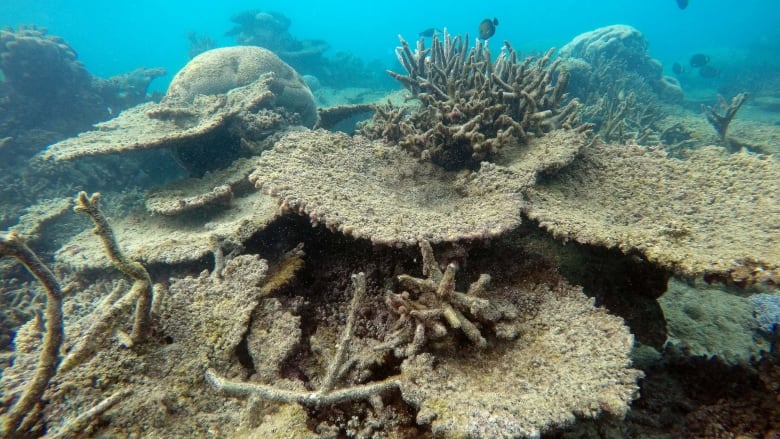Great Barrier Reef sees record coral bleaching
It's an unprecedented coral die-off, but there's also some good news

A new report has confirmed the largest die-off of coral along Australia's Great Barrier Reef.
Earlier this year, Coral Watch, a citizen science project based out of the University of Queensland, released startling images of severe coral bleaching along the Great Barrier Reef, the largest living structure on Earth.
Coral is composed of thousands of small creatures called polyps that can only thrive in a very narrow range of temperatures. Microscopic algae live inside the tissue and provide coral with their colour. If there is a warming in temperature even as little as 1 C it can disrupt this relationship, causing the coral to lose its colour.

The new research has found that the area worst affected is about 700 kilometres long in the northern region of the reef. That area has lost an average 67 per cent of its shallow-water coral over the past eight to nine months.

"Most of the losses in 2016 have occurred in the northern, most-pristine part of the Great Barrier Reef. This region escapedwith minor damagein two earlier bleaching events in 1998 and 2002, but this timearoundit has been badlyaffected," said Professor Terry Hughes,Director of the AustralianResearch Council (ARC) Centre of Excellence for Coral Reef Studies based at James Cook University in a statement.
But there's also some good news.
In the southern two-thirds of the reef, the damage has been significantly less. According to Andrew Baird from ARC, in the central region, on average only six per cent of bleached corals died in 2016, with just one per cent in the south.

Earlier this year the Great Barrier Reef Marine Park Authority (GBRMPA) said that this year's intense El Nino a warming in the Pacific Ocean that affects climate around the globe greatly contributed to warming sea temperatures in the region, in turn stressing the coral. It's believe that up to 50 per cent of the coral deaths were due to longer than normal above-average sea surface temperatures.












_(720p).jpg)


 OFFICIAL HD MUSIC VIDEO.jpg)
.jpg)



























































































